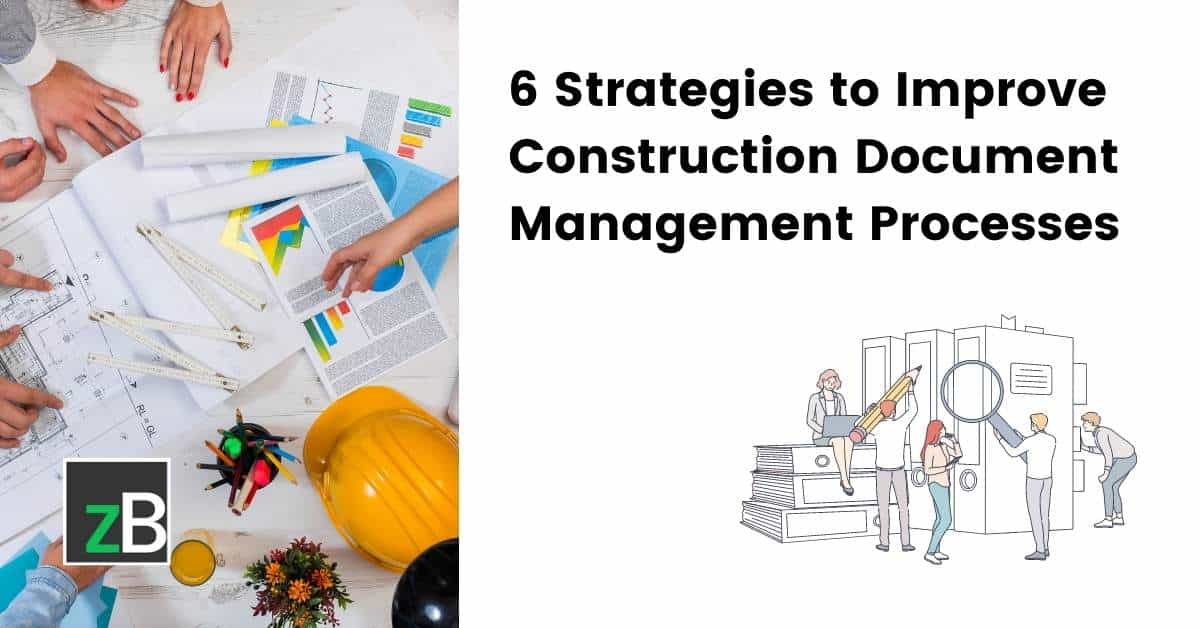Building Better Projects: The Role of Construction Document Management in Success
Wiki Article
Enhancing Operations Effectiveness: Architect's Expert Methods for Building And Construction File Monitoring
In the world of architectural style and building and construction, the careful monitoring of papers stands as a foundation for project success. Designers use different approaches to enhance operations effectiveness and improve building record management procedures. From proficient company methods to the integration of collective platforms and the implementation of secure information management options, engineers browse an intricate landscape of tools and techniques. Nonetheless, among this intricacy, a pick few expert strategies have actually become vital in optimizing workflow efficiency. These methods not just guarantee smooth job progression yet also hold the vital to unlocking enhanced productivity and accuracy in the detailed realm of building and construction file management.Key Paper Company Techniques
When handling construction files, among the crucial strategies that architects employ is developing a efficient and methodical organization system. This system typically involves classifying records based upon their type, such as drawings, specs, agreements, and permits. By developing clear and distinct classifications, engineers can swiftly locate specific information when required, conserving time and minimizing errors in the building and construction process.Within each classification, designers better organize files by producing subfolders or utilizing numbering systems to represent revisions or variations (construction document management). This ordered framework makes certain that the most relevant and current info is conveniently obtainable while keeping a document of modifications made throughout the job timeline
Moreover, designers usually use digital file monitoring platforms that use attributes like keyword search features, version control, and gain access to limitations to enhance organization and collaboration amongst task stakeholders. These devices improve the document retrieval procedure, advertise real-time updates, and facilitate smooth communication, inevitably adding to the general success of the building task.
Collaborative System Integration
To optimize document management performance in building and construction tasks, designers seamlessly integrate collaborative platforms to boost interaction and improve sychronisation amongst job stakeholders. By leveraging collaborative platforms such as job administration software application, cloud-based storage space systems, and interaction tools, designers can develop a centralized center for all project-related documents and interaction channels. These platforms enable group members to gain access to, evaluation, and team up on records in real-time, lowering delays and the danger of errors connected with typical document monitoring approaches.Collaborative platform assimilation additionally fosters transparency and liability within the task group, as all stakeholders have presence into the most up to date project updates and revisions. By streamlining interaction and file sharing, designers can make certain that all staff member are functioning from the most up-to-date details, minimizing the possibilities of disputes or misconceptions arising due to out-of-date papers.
Additionally, joint systems enable smooth collaboration in between engineers, specialists, customers, and other task stakeholders, advertising a more natural and efficient project workflow. By breaking down interaction barriers and assisting in information exchange, architects can drive productivity and innovation in building and construction projects, ultimately bring about successful project outcomes.
Variation Control Best Practices
Applying reliable variation control methods is important for preserving file accuracy and uniformity in building and construction jobs. By establishing a clear system for handling alterations, job groups can ensure that everyone is working from one of the most updated paperwork, reducing the threat of errors and disparities during the building and construction stage.One of the key ideal techniques for version control is to assign unique identifiers to every file variation. This can be accomplished by utilizing a numbering system or day stamp that clearly indicates the order of alterations. By plainly identifying each version, Homepage staff member can conveniently track the development of the file and determine one of the most current version.

Automation Devices for Performance

Document control software program, like Procore or PlanGrid, centralizes job documentation, making it quickly available to all stakeholders. These platforms permit for real-time partnership, version control, and automated back-ups, safeguarding against information loss. Furthermore, Building Info Modeling (BIM) software program automates the generation of building and construction illustrations and makes certain that modifications are synchronized across all related papers.
Incorporating automation tools with cloud storage space options further enhances access and safety and security. By automating the record management procedure, job groups can concentrate their effort and time on value-adding tasks, eventually boosting efficiency and task outcomes.
Secure Information Monitoring Solutions
Successfully protecting and taking care of task data is critical in the building sector to make certain discretion and stability throughout the project lifecycle. Secure information monitoring solutions play an important role in shielding sensitive details from unapproved accessibility or violations. Architectural firms can make use of encrypted cloud storage services to safely share and store project papers with accredited personnel. Carrying out accessibility controls, such as individual verification and authorization settings, ensures that only authorized individuals can watch or modify delicate information.Furthermore, utilizing digital rights management (DRM) tools includes an added layer of security by preventing the unauthorized distribution or duplication of job papers. Routine data back-ups are important link crucial to reduce the risk of data loss because of unpredicted circumstances like hardware failures or cyber-attacks. Collaborative systems with integrated safety features allow seamless communication and file sharing among project employee while maintaining information stability.
Final Thought
Finally, applying crucial document organization methods, incorporating collaborative platforms, exercising variation control ideal practices, making use of automation tools, and taking on safe and secure information monitoring solutions are necessary approaches for enhancing workflow effectiveness in construction document management. These skilled methods can streamline procedures, improve interaction, ensure accuracy, and maintain data safety and security throughout the building and construction task lifecycle.In the realm of architectural style and building and construction, the meticulous management of records stands as a keystone for job success. These strategies not just make sure smooth project progression however additionally hold the vital to unlocking improved performance and precision in the detailed world of building and construction file monitoring.
To maximize file monitoring effectiveness in construction projects, designers flawlessly incorporate collective platforms to improve communication and enhance sychronisation among task stakeholders. These systems permit group members to access, testimonial, and work together on papers in real-time, reducing delays and the risk of mistakes linked with typical document monitoring methods.
Making use of automation devices in construction file administration dramatically improves effectiveness and enhances procedures for project groups. construction document management.
Report this wiki page